Heat Treating Rock For Flint Knapping
Oct 15, 2021 17:26:38 GMT -5
RWA3006, mjflinty, and 7 more like this
Post by RickB on Oct 15, 2021 17:26:38 GMT -5
I'm posting some info for others to use if they plan on trying to heat treat rock for flint knapping or other purposes.
I posted two of the photos and some information before in a couple of posts that I made in "The Official Day in
Pictures" thread. I heat treat some rock as it can improve the workability and sometimes enhance the color. This
does not work or is needed for all rock. An internet search can provide you some temperature ranges that different
types of rock will need. The roaster that I used was bought at a local flea market for $10. This is an older model
and the temperature on the dial goes up to 500°F. With the ceramic liner taken out, I have gotten temperatures up
to 650°F
Wife and I went camping a couple weeks ago and I used the campground's electricity to power an old
turkey roaster for a couple days. To get higher temperatures, I removed the ceramic liner in the roaster.
You will see in the photos below that I have drilled two holes into the top of the roaster lid. One is in the
center and one is in a corner. There are 4 heating elements in a roaster, one in each of the corners. That
is where the higher temperatures are attained. I put a high temperature BBQ thermometer in each hole to
get accurate temps as the dial will be inaccurate when the liner is taken out. I have a five gallon bucket
of clean playground sand that I keep using over and over for heat treating. I placed the trimmed mookaite slabs
along with some Florida coral and a piece of Brazilian agate into the corners of the roaster with some sand
to hold them in place. When all the pieces were added, I then filled up the roaster with the rest of the sand.
The sand helps retain the heat and keep it at a constant temperature.
I had to constantly check the temps out as I slowly raised it to 200°F/250°F for at least a couple hours. This
drives out any moisture that could crack the rock. After that, I slowly ramped the temp 50 degrees per hour until
it got to 450°. I ended up keeping it at the higher temp for about six hours and turned the power off to let it
slowly cool. When it got down to 100°F I took out all the pieces and randomly pressure flaked some of them
to see if I could pull a nice flake off. All pieces flaked good enough for me to work but I selected several to put
back into the oven at 500°. I wanted to see if the higher temperature helped get the rock any better. I did
not see much difference at all so that was it. Photos below show three pieces that I tested. I just flaked one
of the sides and not both. I did end up making one point out of the mookaite. Nice, thin, good color and
light gloss. In the Southeast we would call this point a Morrow Mountain.
Raw slabs
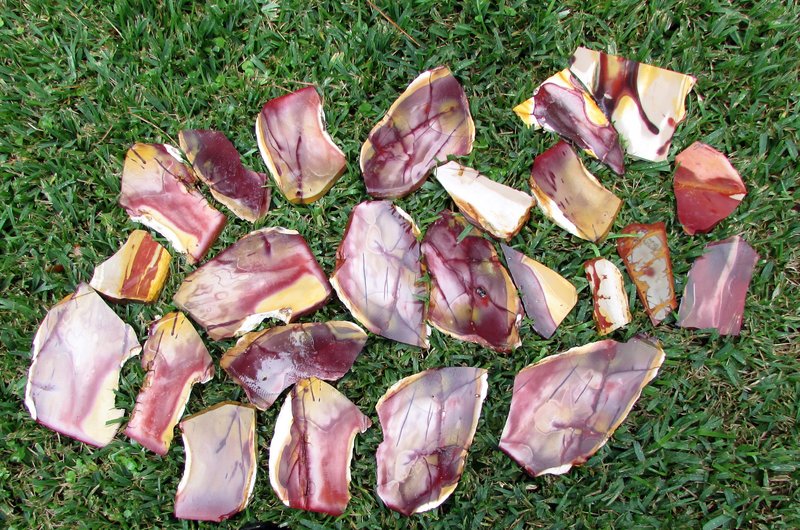
Trimmed preforms
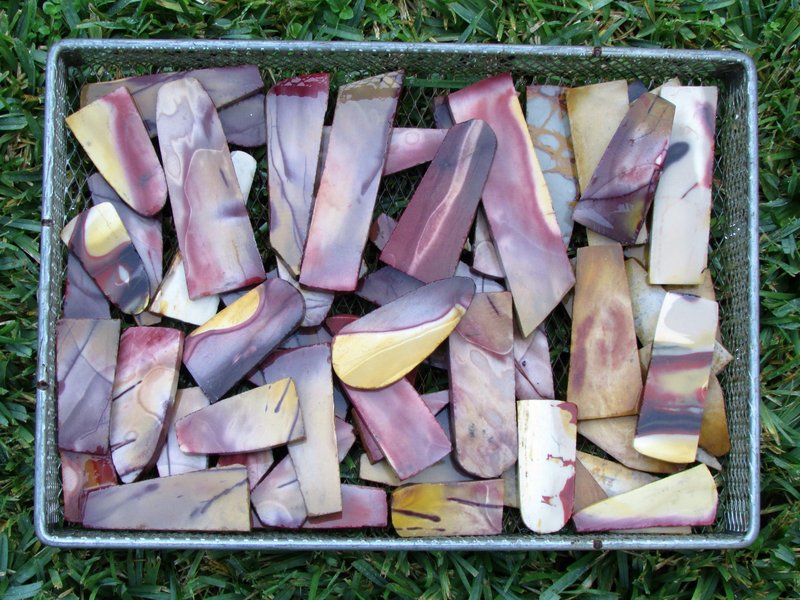
Two photos of the roaster oven
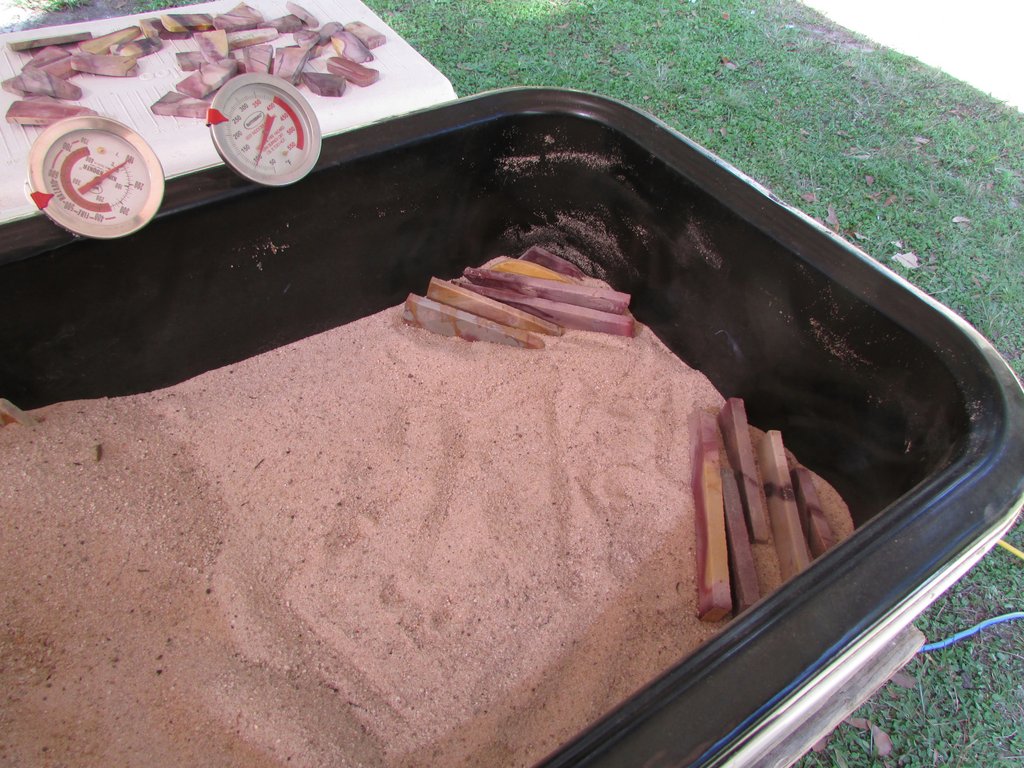
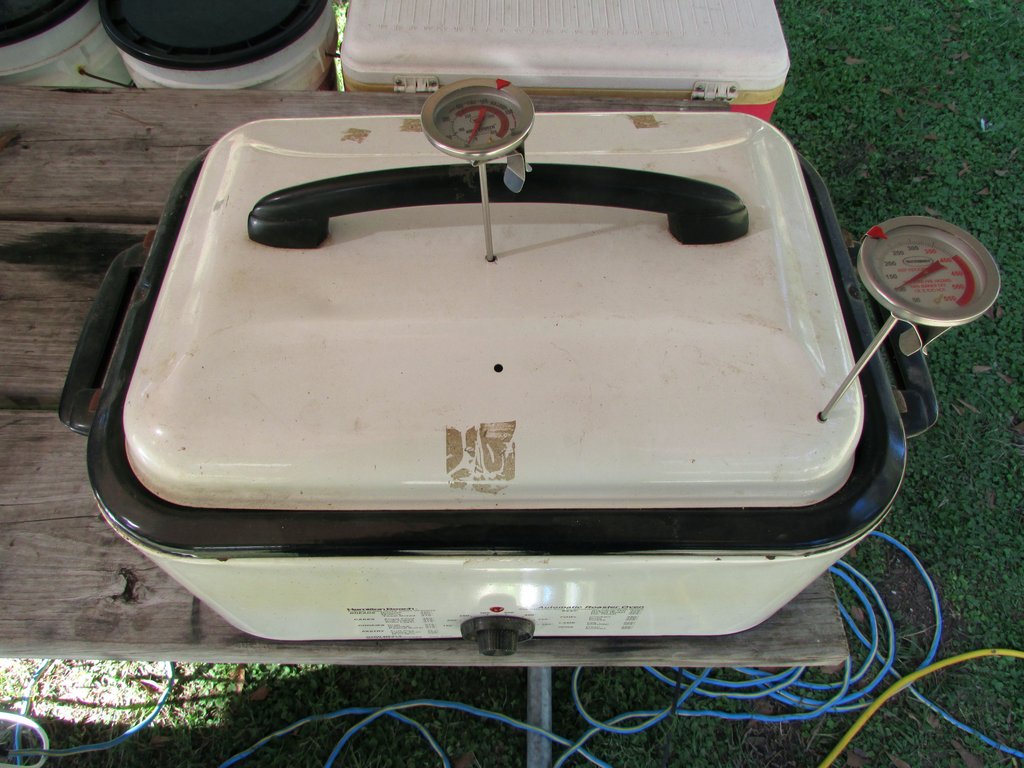
Heated slabs

The same slabs, flaked on one side

Test flake running across the top edge

Arrowhead
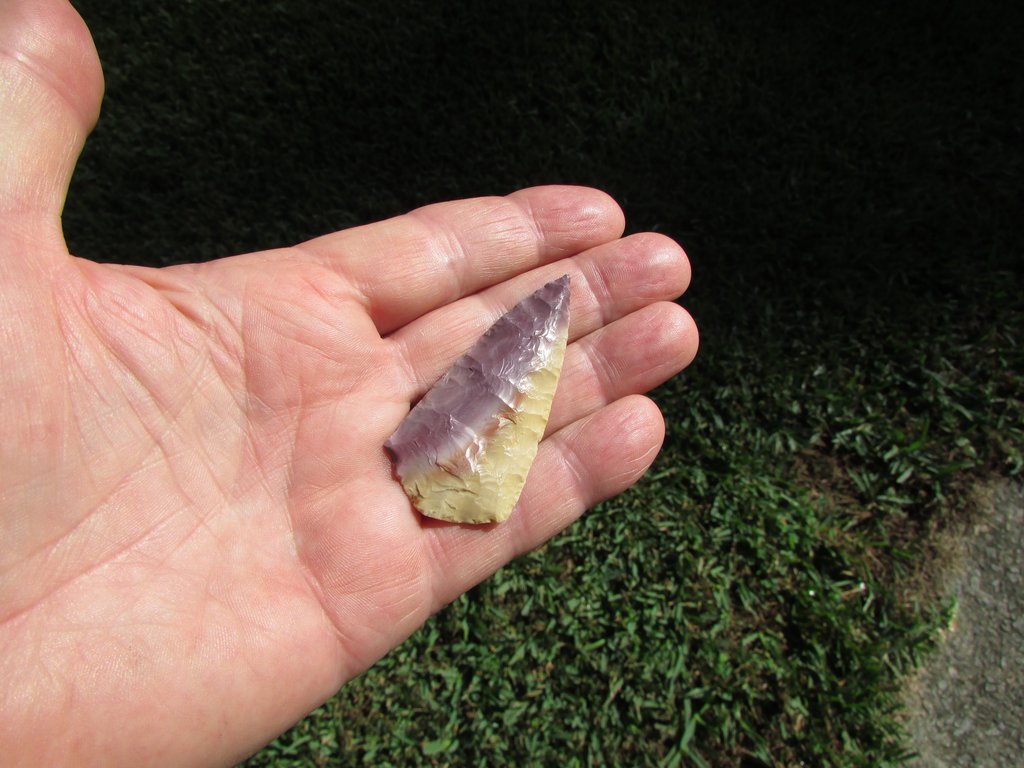
These are the tools that I made this point with. An Ishi stick, abrading stone, notched leather pad. I've started
working on that piece of Brazilian agate you see on the leather.
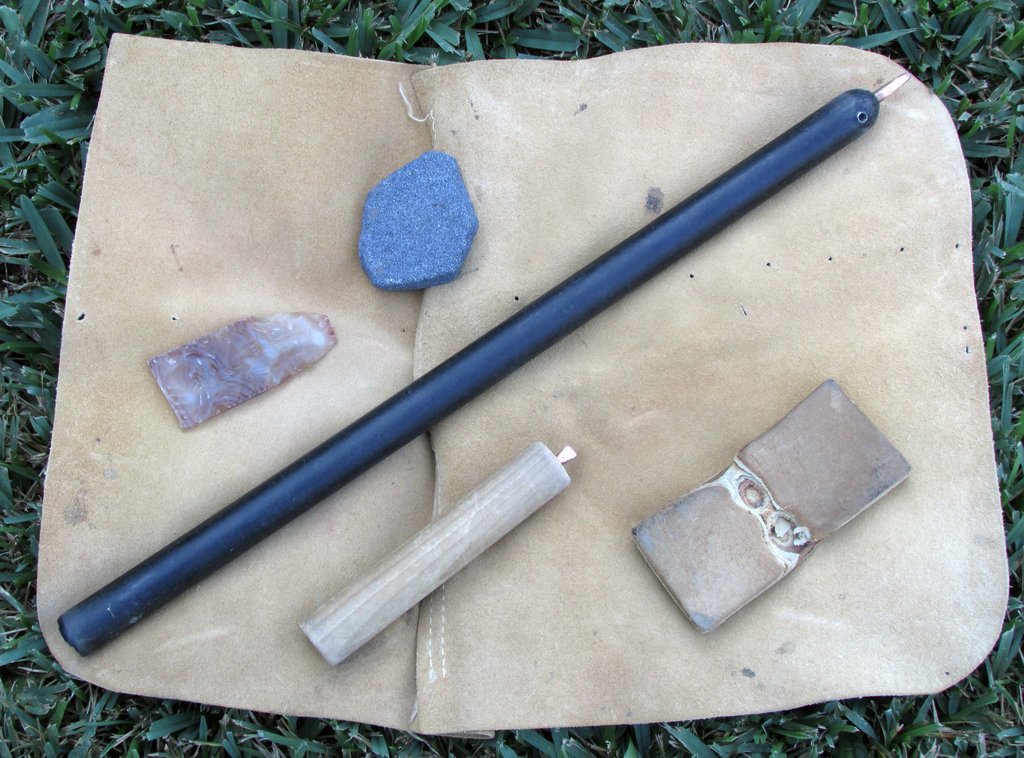
Edit: Clipped this from an older thread to add Michael's valuable input mjflinty

I posted two of the photos and some information before in a couple of posts that I made in "The Official Day in
Pictures" thread. I heat treat some rock as it can improve the workability and sometimes enhance the color. This
does not work or is needed for all rock. An internet search can provide you some temperature ranges that different
types of rock will need. The roaster that I used was bought at a local flea market for $10. This is an older model
and the temperature on the dial goes up to 500°F. With the ceramic liner taken out, I have gotten temperatures up
to 650°F
Wife and I went camping a couple weeks ago and I used the campground's electricity to power an old
turkey roaster for a couple days. To get higher temperatures, I removed the ceramic liner in the roaster.
You will see in the photos below that I have drilled two holes into the top of the roaster lid. One is in the
center and one is in a corner. There are 4 heating elements in a roaster, one in each of the corners. That
is where the higher temperatures are attained. I put a high temperature BBQ thermometer in each hole to
get accurate temps as the dial will be inaccurate when the liner is taken out. I have a five gallon bucket
of clean playground sand that I keep using over and over for heat treating. I placed the trimmed mookaite slabs
along with some Florida coral and a piece of Brazilian agate into the corners of the roaster with some sand
to hold them in place. When all the pieces were added, I then filled up the roaster with the rest of the sand.
The sand helps retain the heat and keep it at a constant temperature.
I had to constantly check the temps out as I slowly raised it to 200°F/250°F for at least a couple hours. This
drives out any moisture that could crack the rock. After that, I slowly ramped the temp 50 degrees per hour until
it got to 450°. I ended up keeping it at the higher temp for about six hours and turned the power off to let it
slowly cool. When it got down to 100°F I took out all the pieces and randomly pressure flaked some of them
to see if I could pull a nice flake off. All pieces flaked good enough for me to work but I selected several to put
back into the oven at 500°. I wanted to see if the higher temperature helped get the rock any better. I did
not see much difference at all so that was it. Photos below show three pieces that I tested. I just flaked one
of the sides and not both. I did end up making one point out of the mookaite. Nice, thin, good color and
light gloss. In the Southeast we would call this point a Morrow Mountain.
Raw slabs

Trimmed preforms

Two photos of the roaster oven


Heated slabs

The same slabs, flaked on one side

Test flake running across the top edge

Arrowhead

These are the tools that I made this point with. An Ishi stick, abrading stone, notched leather pad. I've started
working on that piece of Brazilian agate you see on the leather.

Edit: Clipped this from an older thread to add Michael's valuable input mjflinty






 )
)









